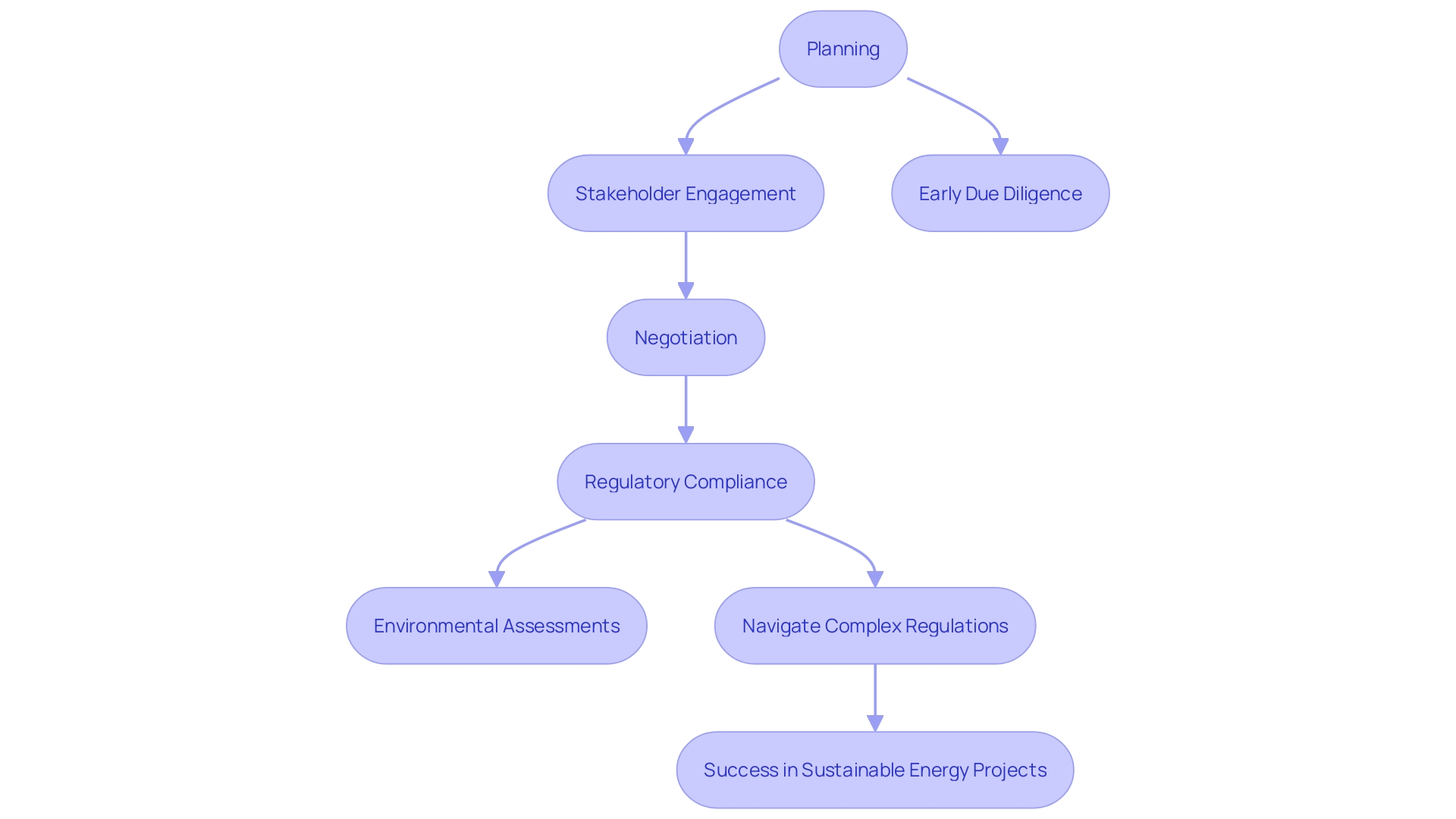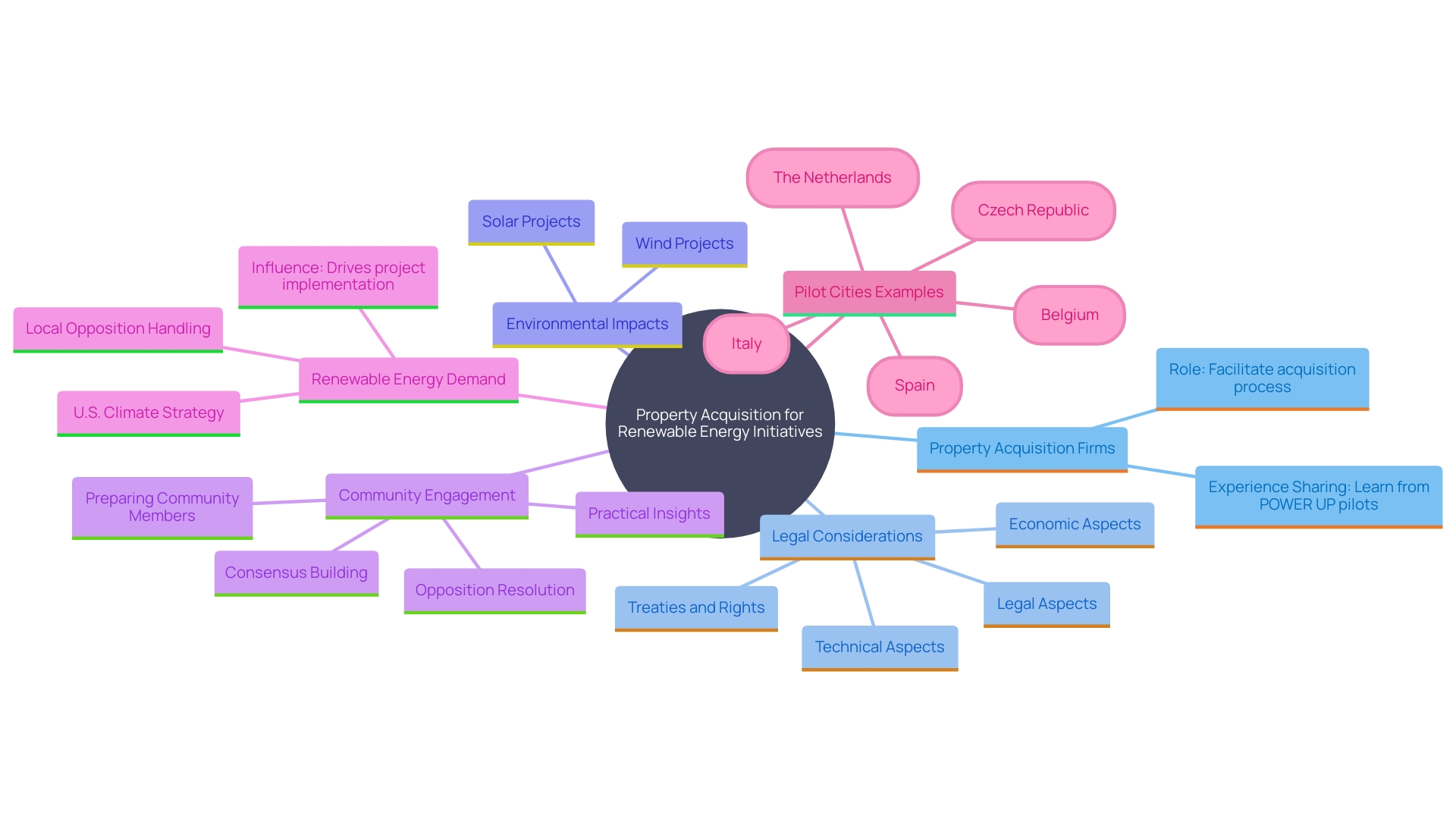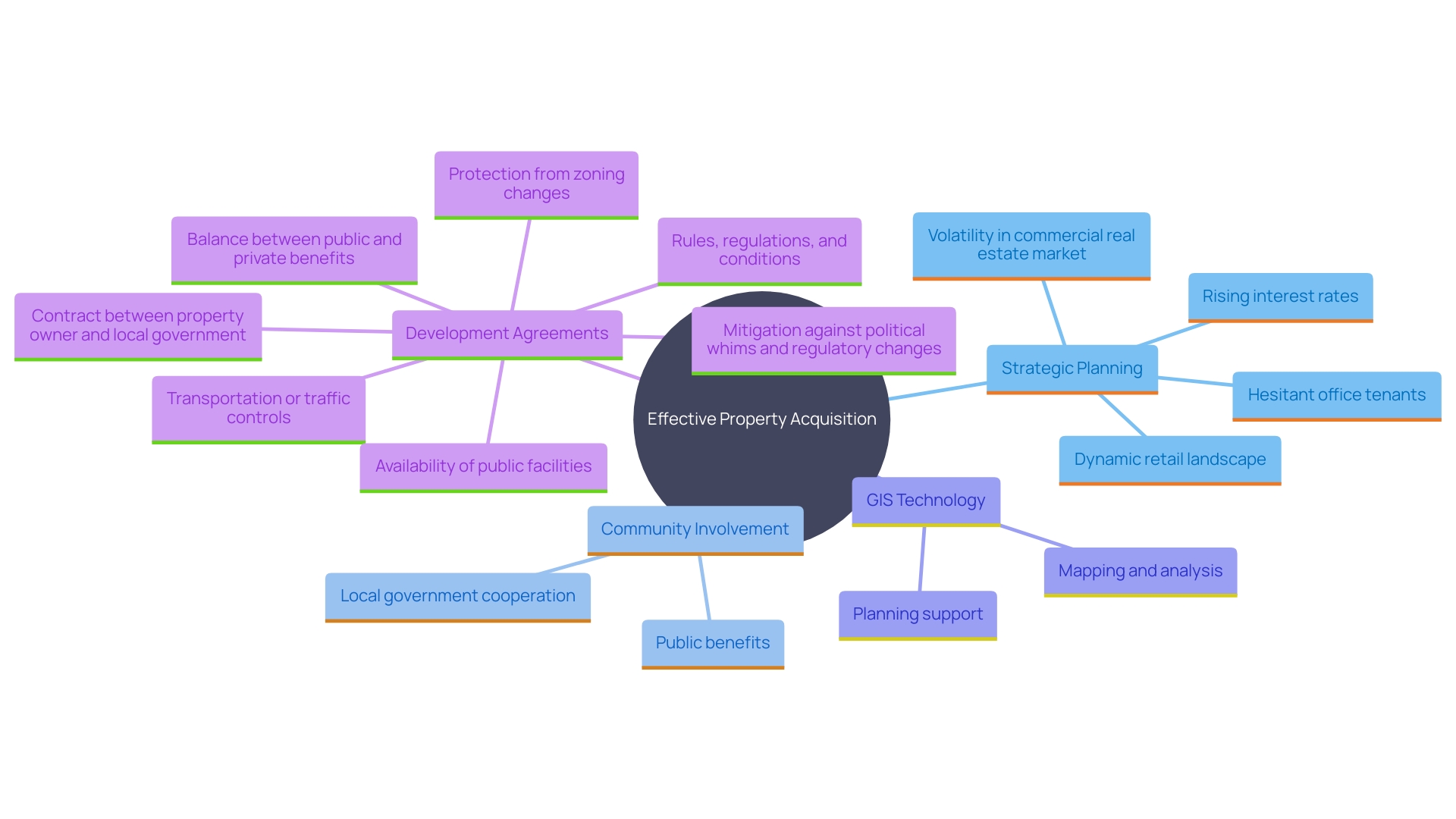Introduction
The burgeoning demand for renewable energy has underscored the critical role of land acquisition in the development of solar farms, wind turbines, and other energy infrastructures. Effective land acquisition practices are indispensable, encompassing meticulous planning, stakeholder engagement, and rigorous negotiation to secure appropriate sites. The Lawrence Berkeley National Laboratory's estimate that only 20% of projects entering interconnection queues are realized highlights the necessity of strategic land acquisition in ensuring project success.
Navigating the labyrinth of regulatory compliance, encompassing local, state, and federal regulations, zoning laws, and environmental assessments, further complicates the process. The presence of endangered species or their habitats can cause significant delays and necessitate costly mitigation efforts. Concurrently, the shift towards automation has led to increased power requirements, necessitating a multifaceted approach that balances market speed, proximity to power sources, scalable infrastructure, and strategic power management.
Land acquisition companies, with their expertise in legal frameworks, due diligence, and community engagement, play a pivotal role in securing land for energy projects. Their holistic approach addresses legal, environmental, and community considerations, ensuring compliance and fostering trust. Early community engagement, advanced technologies like Geographic Information Systems (GIS), and clear compensation frameworks are crucial strategies for navigating land acquisition challenges.
Ultimately, successful land acquisition for renewable energy projects minimizes delays, reduces costs, and ensures regulatory compliance, facilitating the advancement towards a sustainable future.
The Importance of Land Acquisition in Renewable Energy
Land acquisition is a vital component in the development of sustainable power initiatives, playing an essential role in locating and securing suitable locations for solar farms, wind turbines, and other power infrastructures. Given the skyrocketing demand for renewable energy and the subsequent transformation of site selection processes, effective property acquisition practices are more critical than ever.
The procedure requires careful planning, broad stakeholder involvement, and thorough negotiation to obtain property rights, all of which can greatly influence the timeline and overall viability. For example, the Lawrence Berkeley National Laboratory estimates that only 20% of initiatives that enter interconnection queues across the nation are ultimately constructed, emphasizing the significance of strategic site acquisition in ensuring success.
Moreover, the complexities of regulatory compliance cannot be overstated. As noted, sustainable resource developers must navigate a labyrinth of local, state, and federal regulations, including zoning laws, land use permits, and environmental assessments. This is especially relevant considering that the presence of endangered species or their habitats on a site can postpone activities by weeks or even months, along with expensive mitigation efforts. Hence, early environmental due diligence and comprehensive species surveys are indispensable in determining site suitability.
Additionally, the shift towards automation in response to workforce shortages has led to a noticeable uptick in power requirements. As companies continue to automate their operations, they must be prepared for a continued and potentially accelerated surge in their power demands. This trend highlights the necessity for sustainable resource developers to adopt a multifaceted approach that balances speed to market, proximity to power sources, scalable infrastructure, and strategic power management over time.
Ultimately, successful property acquisition for sustainable initiatives not only ensures adherence to regulatory requirements but also minimizes delays and lowers expenses related to development. A comprehensive and tactical method to property procurement is vital for utilizing the complete capacity of sustainable power and progressing towards an eco-friendly future.

Key Factors in Evaluating Land for Renewable Energy Projects
'Assessing land for renewable energy initiatives involves several critical factors, notably geographical location, infrastructure access, environmental impact, and land use regulations.'. Proximity to existing power grids and transportation routes significantly enhances feasibility, while environmental considerations mandate comprehensive studies to assess potential impacts on local ecosystems. The National Environmental Policy Act (NEPA) mandates federal agencies to perform thorough environmental assessments for significant undertakings, ensuring minimal environmental disruption. Furthermore, the land's zoning classification and historical land use must correspond with the intended power project to prevent legal complications.
The rise in demand for sustainable resources has transformed site selection, with a considerable shift towards automation increasing power requirements. This trend highlights the significance of selecting sites that can accommodate greater power requirements. Moreover, the difficulty of balancing land use for agriculture and solar power is emphasized by the idea of agrivoltaics, which combines solar panels with farming activities. 'This dual-use approach is gaining traction in states like Pennsylvania, where research initiatives are exploring its feasibility and benefits.'.
The variety of clean power siting policies across the United States adds another layer of complexity. Each state has a customized approach to siting and permitting, as revealed by a recent DOE report. This variability necessitates a thorough understanding of local regulations and community engagement to build consensus and mitigate opposition. 'Stakeholders' concerns must be addressed through transparent communication and active listening to ensure the successful implementation of renewable initiatives.'.
Role of Land Acquisition Companies in Energy Projects
Property acquisition firms play a crucial part in obtaining terrain for power initiatives. Their expertise extends to navigating intricate legal frameworks, performing thorough due diligence, and engaging in negotiations with landowners. These companies often assemble a team of professionals, including surveyors, environmental scientists, and legal advisors, to adopt a holistic approach to property acquisition.
A significant aspect of their work involves managing relationships with local communities. As Kaitlyn Spangler, assistant professor in the Department of Agricultural Economics, Sociology, and Education, points out, "There’s this large question of where that land is and how the environment and nearby communities will be affected." Addressing these concerns is crucial for gaining community support for sustainable initiatives.
The growing demand for renewable resources, driven by automation and increased power requirements, has transformed site selection processes. For example, Sempra Infrastructure's commitment to sustainability and innovation underscores the importance of energy infrastructure in the global energy transition. 'Their work emphasizes resilient operations and social responsibility, illustrating the broader impact of effective property acquisition strategies.'.
Furthermore, treaties and legal mechanisms, such as those held by tribal nations, are integral to the property acquisition process. These agreements, considered the “supreme Law of the Land,” according to the U.S. Constitution, ensure that cultural practices and legal rights are respected. This legal backdrop necessitates a nuanced approach to property acquisition, ensuring compliance and fostering trust with stakeholders.
In summary, property acquisition companies are essential in balancing legal, environmental, and community considerations, ensuring the successful implementation of renewable energy projects while navigating the complexities of modern energy demands.

Strategies for Navigating Land Acquisition Challenges
Navigating the complexities of property acquisition demands strategic planning and robust communication. Early engagement with local communities is crucial, as it fosters better outcomes and mitigates resistance. Utilizing advanced technologies, such as Geographic Information Systems (GIS), can significantly streamline the process by identifying optimal land parcels and providing visual data to support negotiations. For instance, the SEI initiative in Khon Kaen, Thailand, demonstrated the efficacy of stakeholder involvement through tools like Mistakes, which increased inclusivity in urban planning by ensuring diverse representation and highlighting the most affected stakeholders.
Establishing clear compensation frameworks and transparent processes is equally important. This not only enhances trust but also fosters cooperation between developers and landowners. The creation of development agreements between property owners and local governments can provide a balanced approach, safeguarding both public and private interests. Such agreements assist in reducing political and regulatory uncertainties, ensuring smoother execution of the initiative. By addressing potential conflicts proactively, these agreements can protect developments from subsequent zoning changes and other regulatory controls, thereby aligning long-term project viability with community expectations.

Conclusion
Effective land acquisition is vital for the success of renewable energy projects, forming the foundation for securing suitable sites for solar farms, wind turbines, and other infrastructures. As the demand for renewable energy rises, the complexities of land acquisition have intensified, making meticulous planning, stakeholder engagement, and negotiation essential. The statistic from the Lawrence Berkeley National Laboratory, indicating that only 20% of projects in interconnection queues are realized, highlights the importance of strategic land acquisition.
Navigating regulatory compliance presents additional challenges, as developers must address a maze of local, state, and federal regulations, zoning laws, and environmental assessments, which can lead to significant delays. The presence of endangered species further complicates site selection, necessitating early due diligence. Moreover, the shift towards automation increases power requirements, underscoring the need for a balanced approach that aligns speed to market with sustainable practices.
Land acquisition companies are crucial in this process, utilizing their expertise to navigate legal frameworks and build community relations. Their comprehensive strategies ensure compliance while addressing stakeholder concerns, facilitating smoother project implementation. Early community engagement and advanced technologies like Geographic Information Systems (GIS) enhance the efficiency of land acquisition efforts.
In conclusion, effective land acquisition minimizes delays and costs while ensuring regulatory compliance, thereby advancing renewable energy initiatives. A strategic approach that combines community engagement and technological innovations is essential for realizing the full potential of renewable energy projects and contributing to a sustainable future.




